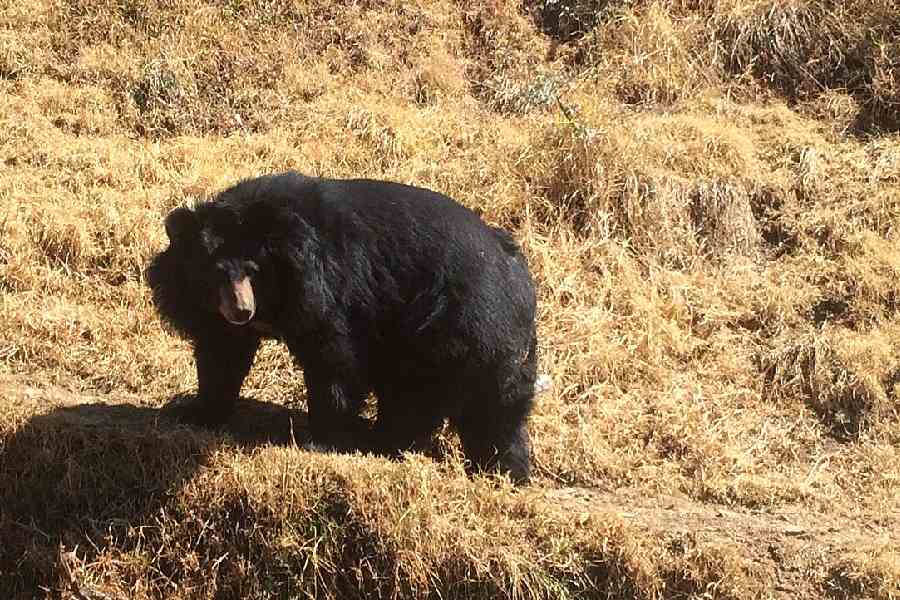Soon after the novel coronavirus outbreak, scientists identified an alteration in the virus’s RNA sequence.
Compared to other coronaviruses, this alteration helps the novel coronavirus (nCoV or more technically SARS-CoV-2) spread more efficiently in humans.
Immediately, politicians went into a frenzy. Former Iran President Mahmoud Ahmadinejad declared that the nCoV is a bio-weapon from a military laboratory.
“It is clear to the world that the mutated coronavirus was produced in a lab,” he said.
US Senator Tom Cotton suggested the virus was a biological weapon released on purpose.
Our own MP, Manish Tewari, national spokesperson for the Congress, tweeted on March 13: “Coronavirus is a bio-weapon… an act of terror. International investigation conducted either under auspices of ICJ or ICC is necessary to unearth the truth and bring focus back on eradicating biological weapons.”
Within the past week, many claims have been made on social media and in articles placed in the public domain that Bill Gates helped create the nCoV with the idea of selling a particular vaccine.
Can the novel coronavirus be a human creation?
The outbreak was detected in Wuhan, China, as we all now know. The Chinese authorities informed the World Health Organisation on December 31 last year that the outbreak was that of a novel coronavirus that was causing severe illness.
The outbreak rapidly become a pandemic and has already killed over 150,000 people worldwide.
Shortly after the outbreak, Chinese scientists determined the RNA sequence of SARS-CoV-2 and made the sequence available in the public domain.
This has facilitated research on the evolution of the novel coronavirus and led to the firm conclusion that the virus was not engineered by humans but arose naturally by evolution from another coronavirus.
Before the emergence of SARS-CoV-2, six other coronaviruses had been known to infect humans. All of them cause clinical symptoms.
Two of them, SARS-CoV and MERS-CoV, cause severe disease and often death. The remaining four (HKU1, NL63, OC43 and 229E) cause mild clinical symptoms.
The RNA sequences of these six coronaviruses had been determined before the current outbreak. Different portions of the RNA of these viruses are associated with different functions.
A virus cannot live independently. It needs to get into an organism’s cell — host cell — and multiply there. We humans are not the favourite host of a virus. Viruses usually live in other animals.
In the process of getting into a host cell, living and multiplying there, a virus uses many biological features of the host cell aside from its own. The coronavirus has spike proteins on its surface that help it gain entry into a host cell, first by grabbing and then penetrating the outer wall of the host cell.
The spike protein has two major components: the receptor-binding domain (RBD), which is like a molecular hook that helps the virus grab the host-cell surface, and the cleavage site, which helps it penetrate the host cell.
The genome of an organism accumulates changes as it evolves. A change is usually harmful to the organism. But sometimes a change can be beneficial, because it helps the organism survive better and longer. It may also help the organism reproduce more.
A genome has several portions, not all of which are equally important to the organism. Some portions are so critical to its survival that the organism dies if an alteration takes place in that region.
The not-so-critical portions are usually found to harbour many alterations. The RBD portion of a coronavirus genome — it’s most variable portion — accumulates many alterations during its evolution over time.
The genome sequence of the novel coronavirus (SARS-CoV-2) is remarkably similar — letter by letter through its about 30,000 letters (nucleotides) — to those of SARS-CoV and other SARS-like coronaviruses found in other animals, including bats.
SARS-CoV-2 is therefore a descendant of, or has evolved from, other SARS or SARS-like coronaviruses. There are, however, some notable differences.
The RBD portion shows five alterations in the SARS-CoV-2 genome compared to SARS-CoV. These alterations are remarkable. Because of these alterations, the novel coronavirus can bind very efficiently to a protein present on the surface of human cells, especially in some cells of the lung. This protein is ACE2, or angiotensin-converting enzyme 2, which regulates blood pressure.
Of course, SARS-CoV also binds to ACE2, but the descendant virus (CoV-2) binds much more efficiently. Patients suffering from heart disease and diabetes are often treated with ACE inhibitors. These medicines actually help increase the amount of the ACE2 protein in the body.
The presence of more ACE2 protein enables more coronavirus particles to enter the lungs, because more coronaviruses find protein molecules to latch on to.
The cleavage site of the novel coronavirus too exhibits a novel alteration compared to SARS-CoV. However, it is still unclear whether this alteration results in better penetration into the host cell.
Bats and pangolins
How do these findings help refute the claim that the novel coronavirus is a man-made bio-weapon, created through genetic manipulation?
There is no direct evidence against the bio-weapon claim. But the indirect evidence derived from studies of the genomes of coronaviruses is overwhelming.
The genome of a bat coronavirus (RaTG13) is about 96 per cent identical to that of SARS-CoV-2. Interestingly, the similarity between SARS-CoV-2 and SARS-CoV is only about 79 per cent; with MERS-CoV it is even lower, about 50 per cent.
Thus, the novel coronavirus is more similar to the bat coronavirus than to other human coronaviruses (SARS and MERS). This indicates that SARS-CoV-2 is more likely to have arisen from a bat coronavirus than from a pre-existing human coronavirus.
However, there is considerable dissimilarity between SARS-CoV-2 and bat coronaviruses relating to the receptor-binding domain (RBD). The bat coronavirus, therefore, cannot bind as efficiently to human ACE2 as SARS-CoV-2.
Coronaviruses were also found in pangolins — commonly known as the “scaly anteater”, now an endangered species — around the Wuhan area. Pangolin meat is a delicacy in China. The scales of the pangolin are much sought after for their presumed medicinal properties. Therefore, the pangolin is poached and trafficked.
Just before the Covid-19 outbreak in Wuhan, two dead pangolins were discovered in the nearby Guangdong Wildlife Rescue Centre. The lungs of these dead pangolins were filled with a frothy liquid. Coronaviruses were found in these pangolins.
Further, scientific work revealed that pangolin coronaviruses are similar to human SARS-CoV-2. How similar? In subsequent scientific investigations, the letter-by-letter identity estimates between the genomes of the novel human and pangolin coronaviruses were between 90 and 92 per cent.
But what is more remarkable is that all of the alterations in the RBD that confer a high efficiency on the SARS-CoV-2 to bind to human ACE2 are present in the pangolin coronaviruses.
The logical conclusion is that the pangolin coronavirus jumped to humans. The pangolin coronavirus loved humans because it could get into human lungs easily via the ACE2 protein and multiply happily there.
At some stage, the virus — possibly because of one or two other changes within its genome — acquired the capability of human-to-human transmission. This is a clear case of Darwinian natural selection.
There is no need to accuse ourselves of having engineered a coronavirus to a novel form and made it more infective for its use as a bio-weapon.
Partha P Majumder is president, the Indian Academy of Sciences, and president, the West Bengal Academy of Science & Technology.











